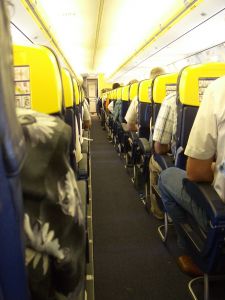This research is the first scientifically documented outbreak of influenza on a plane in recent times and has attracted international interest.
The research was based on New Zealand’s first brush with swine flu in April 2009 when a flight arrived in Auckland with an infected secondary school group returning from a trip to Mexico.
Nine were confirmed with swine flu and were unwell during the flight. Two other passengers became sick after the flight, and were also confirmed with swine flu. The researchers say that the timing of their illness was consistent with exposure during the flight, and the known incubation period for influenza A.
"The pandemic gave us a unique opportunity to investigate the risk of influenza transmission on a flight. Because this was an entirely new virus to New Zealand, we know that the only place it could come from was from other passengers on this flight," says Associate Professor Baker.
"It's reassuring that infections were few in number and were only seen in passengers sitting close to infected people on the flight. That suggests transmission by small droplets produced by coughing and sneezing rather than via fine aerosols carried through the planes air-conditioning system," says Baker
This study also looked at practical issues about how we manage the risk of introduced infections in airline passengers. The study shows that most passengers on the flight were located and followed up by public health authorities, but only 52% were reached within three days of landing.
"Those involved in following-up passengers on this flight were faced with considerable challenges," says Dr Craig Thornley, medical officer of health at ARPHS. "This study shows that requiring subsequent arrivals to complete a detailed locator card, as was introduced for the remainder of the pandemic response, was the right thing to do.
"If the disease is serious and there is a risk that others on the flight have been infected, then systems must support rapid follow up of passengers. Ideally, this would start before passengers leave the airport or board other flights," says Dr Thornley.
The study noted that for island countries with limited entry points, border control measures may have a role in delaying introduction and spread of pandemic influenza during the early containment phase of a pandemic, although the evidence for this remains equivocal.
"An important lesson from this study is that airlines and health authorities need to consider how they can prevent sick people getting onto flights in the first place. In this outbreak, 10 members of the high school group had symptoms when they boarded the flight in the United States. Better exit screening at airports might help detect infectious cases so that they can be managed to reduce the risk of infecting others," says Baker
Associate Professor Baker will present this study at the International Conference on Emerging Infectious Diseases in Atlanta, USA in July.
This research was largely funded internally by the University of Otago and the Auckland Regional Public Health Service, and partly supported by the Centers for Disease Control and Prevention (USA).

